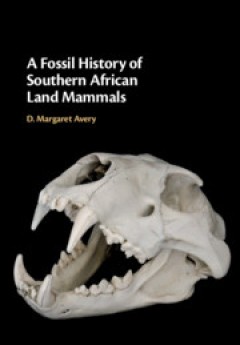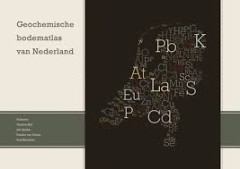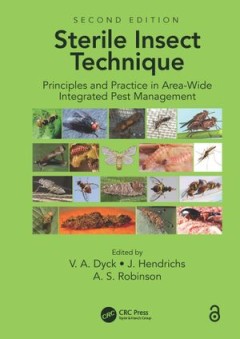Filter by

A Glimpse into Future Research on Microalgae Diversity, Ecology and Biotechno…
Microalgae are photosynthetic unicellular microorganisms that represent an extremely important component of the aquatic ecosystem productivity, diversity, and functioning. Moreover, these microorganisms, using a network of signals, interact with all the other organisms present in their environment. Signals are often secondary metabolites that play an important role in competition, defense, attr…
- Edition
- -
- ISBN/ISSN
- 978-3-0365-6994-9
- Collation
- 202 hlm
- Series Title
- -
- Call Number
- -

A Fossil History of Southern African Land Mammals
This reference provides comprehensive information on the taxonomy and distribution in time and space of all currently recognized southern African fossil mammals. After an introductory background chapter on southern Africa, mammals, sites and dating, the following chapters are presented by epoch, covering the Eocene, Miocene, Pliocene, Pleistocene and Holocene. Individual maps provide informatio…
- Edition
- -
- ISBN/ISSN
- 9781108647243
- Collation
- -
- Series Title
- -
- Call Number
- -

3D Remote Sensing Applications in Forest Ecology: Composition, Structure and …
Dear Colleagues, The composition, structure and function of forest ecosystems are the key features characterizing their ecological properties, and can thus be crucially shaped and changed by various biotic and abiotic factors on multiple spatial scales. The magnitude and extent of these changes in recent decades calls for enhanced mitigation and adaption measures. Remote sensing data and method…
- Edition
- -
- ISBN/ISSN
- 9783039217830
- Collation
- -
- Series Title
- -
- Call Number
- -

Understanding and combatting African Swine Fever : A European perspective
The recent introduction and spread of African swine fever (ASF) into Europe and Asia has shown that an integrated, multidisciplinary effort is needed to tackle this disease and the complex challenges it poses. This book presents practical guidelines on surveillance for detection of ASF virus, how to prevent outbreaks in the domestic pig sector through biosecurity and cleaning and disinfection r…
- Edition
- -
- ISBN/ISSN
- 9789086869107
- Collation
- 310 hlm; ill., lamp.,
- Series Title
- -
- Call Number
- -

Justice and food security in a changing climate
"The UN's Sustainable Development Goals saw the global community agree to end hunger and malnutrition in all its forms by 2030. However, the number of chronically undernourished people is increasing continuously. Ongoing climate change and the action needed to adapt to it are very likely to aggravate this situation by limiting agricultural land and water resources and changing environmental con…
- Edition
- -
- ISBN/ISSN
- 978-90-8686-915-2
- Collation
- 434 pp.
- Series Title
- -
- Call Number
- -

Integrated approaches to health : A handbook for the evaluation of One Health
One Health addresses health challenges arising from the intertwined spheres of humans, animals and ecosystems. This handbook is the product of an interdisciplinary effort to provide science-based guidance for the evaluation of One Health and other integrated approaches to health. It guides the reader through a systems approach and framework to evaluate such approaches in a standardised way. It …
- Edition
- -
- ISBN/ISSN
- 978-90-8686-875-9
- Collation
- 256 pp
- Series Title
- -
- Call Number
- -

Impact of hybrid potato : The future of hybrid potato from a systems perspective
This book describes the potential impact of the innovative hybrid breeding technology in potato. Conventional potato production is based on cumbersome breeding and multiplying of seed tubers. Seed tubers degenerate during the many generations of slow multiplication. Their bulkiness makes them difficult to store and transport. These issues are solved by hybrid true potato seed. Hybrid potato can…
- Edition
- -
- ISBN/ISSN
- 978-90-8686-946-6
- Collation
- 184 pp
- Series Title
- -
- Call Number
- -

Geochemische bodematlas van Nederland
Deze Geochemische bodematlas geeft een uniek overzicht van de chemische samenstelling van de bodem in Nederland. Bodemmonsters van meer dan 350 locaties zijn geanalyseerd op meer dan 40 chemische elementen. De atlas geeft niet alleen informatie over de door de mens beïnvloede toplaag van de bodem, maar ook over de dieper gelegen C-horizont die nog niet of nauwelijks door de mens is beïnvloed.…
- Edition
- -
- ISBN/ISSN
- 978-90-8686-743-1
- Collation
- 276 pp.
- Series Title
- -
- Call Number
- -

Multilevel Modelling for Public Health and Health Services Research
This open access book is a practical introduction to multilevel modelling or multilevel analysis (MLA) – a statistical technique being increasingly used in public health and health services research. The authors begin with a compelling argument for the importance of researchers in these fields having an understanding of MLA to be able to judge not only the growing body of research that uses i…
- Edition
- 1
- ISBN/ISSN
- 9783030348014
- Collation
- XVII, 286 hlm; ill., lamp.,
- Series Title
- -
- Call Number
- -

Sterile Insect Technique : Principles And Practice In Area-Wide Integrated Pe…
The sterile insect technique (SIT) is an environment-friendly method of pest control that integrates well into area-wide integrated pest management (AW-IPM) programmes. This book takes a generic, thematic, comprehensive, and global approach in describing the principles and practice of the SIT. The strengths and weaknesses, and successes and failures, of the SIT are evaluated openly and fairly f…
- Edition
- -
- ISBN/ISSN
- 9781003035572
- Collation
- -
- Series Title
- -
- Call Number
- -
 Computer Science, Information & General Works
Computer Science, Information & General Works  Philosophy & Psychology
Philosophy & Psychology  Religion
Religion  Social Sciences
Social Sciences  Language
Language  Pure Science
Pure Science  Applied Sciences
Applied Sciences  Art & Recreation
Art & Recreation  Literature
Literature  History & Geography
History & Geography